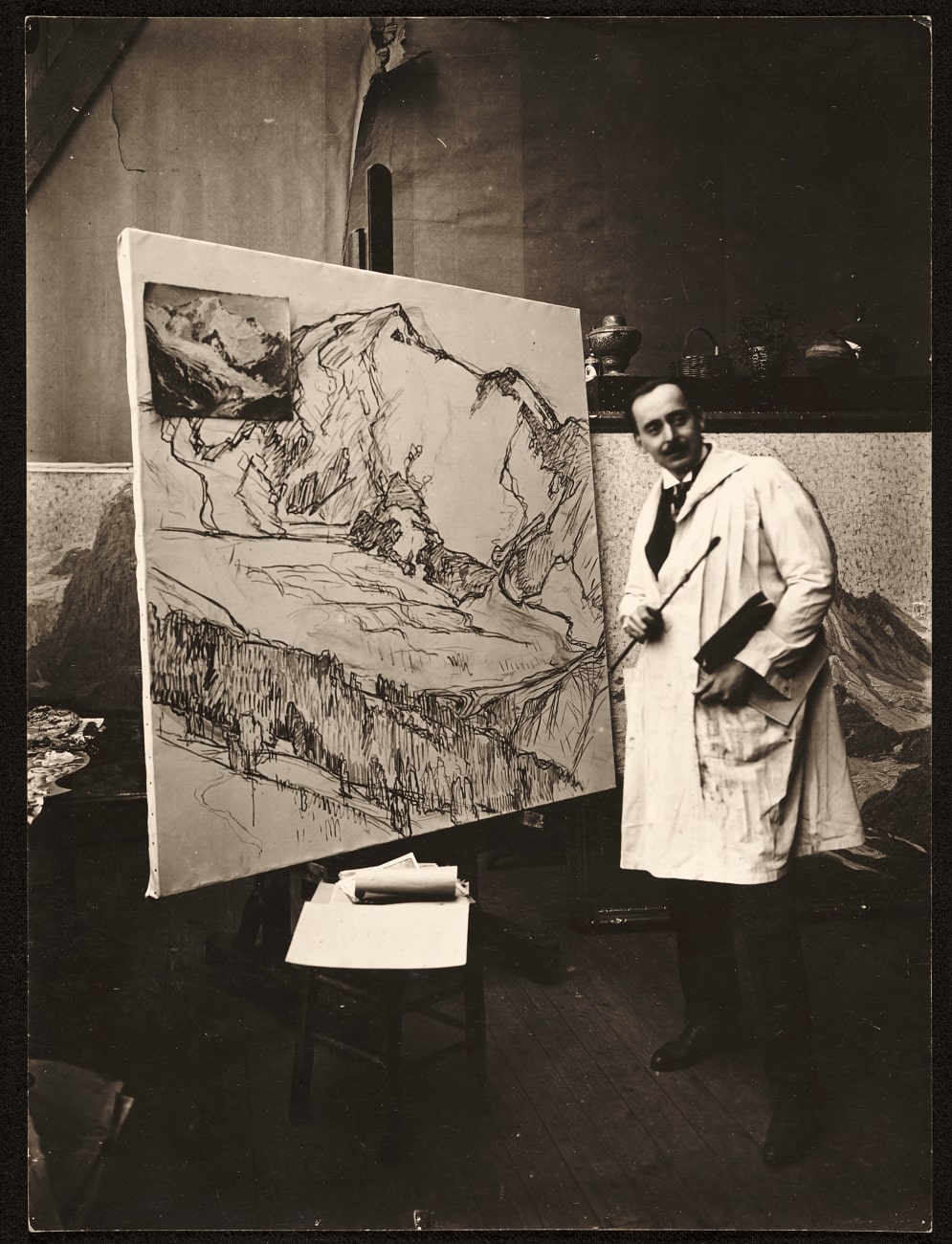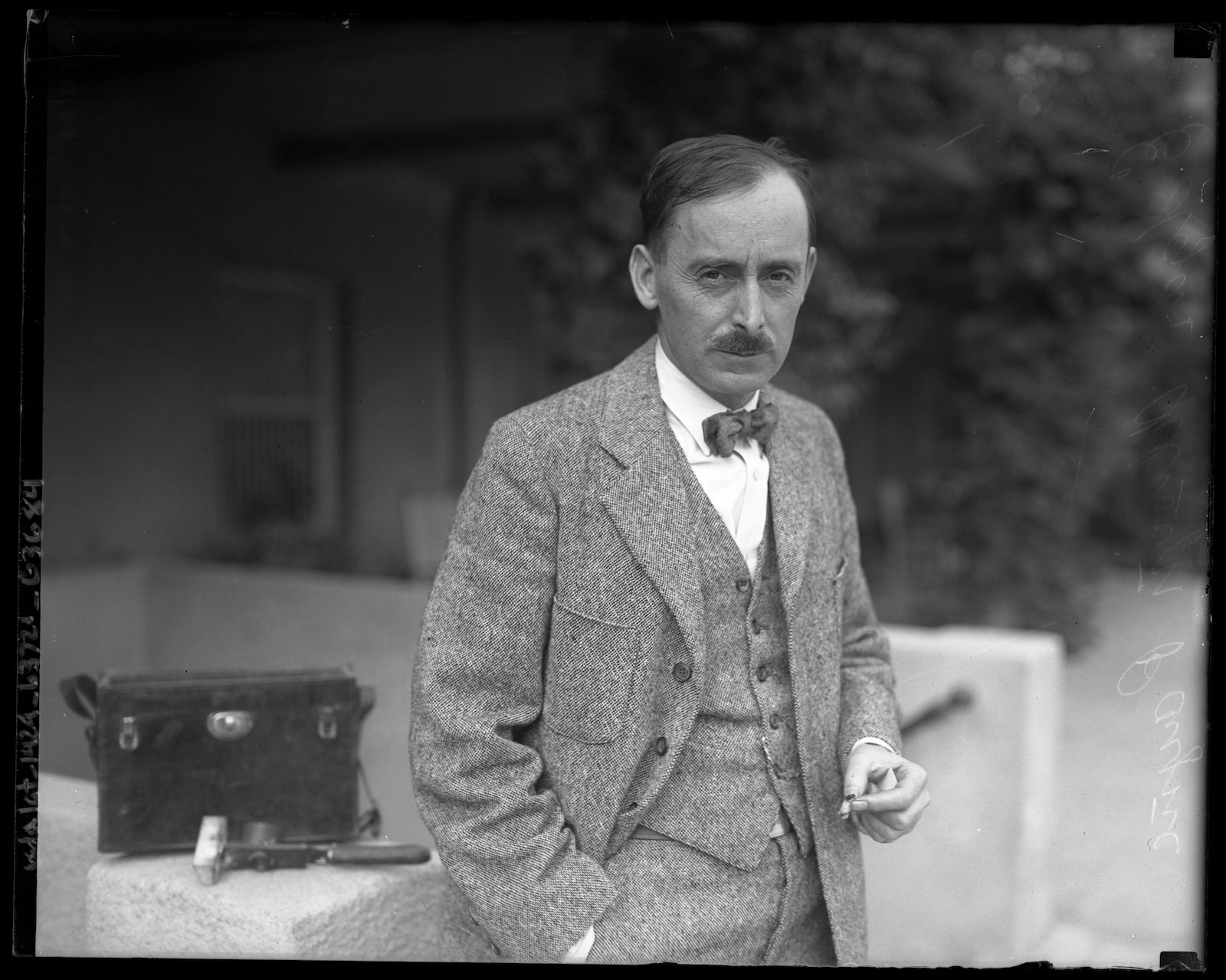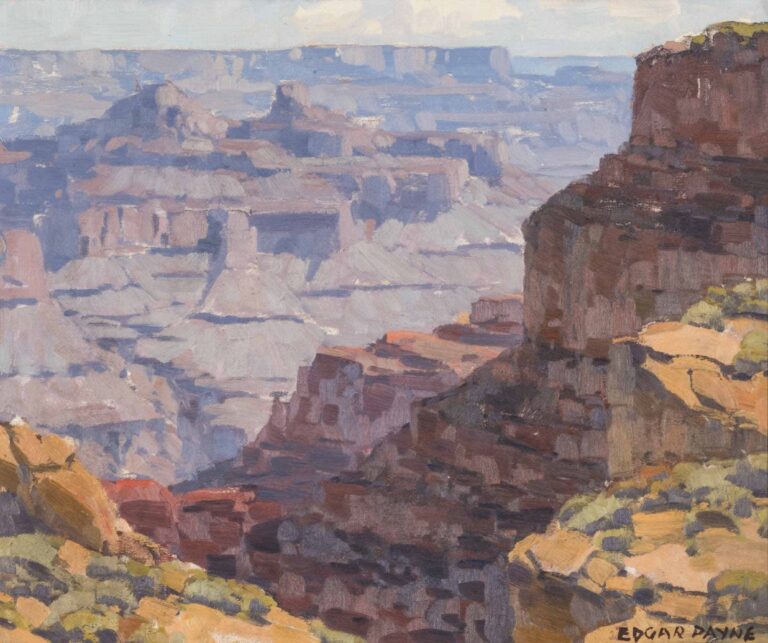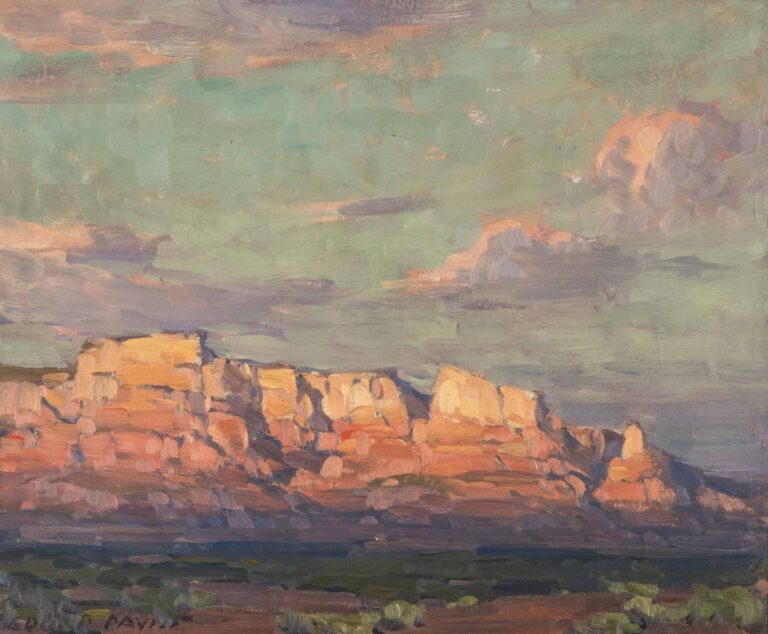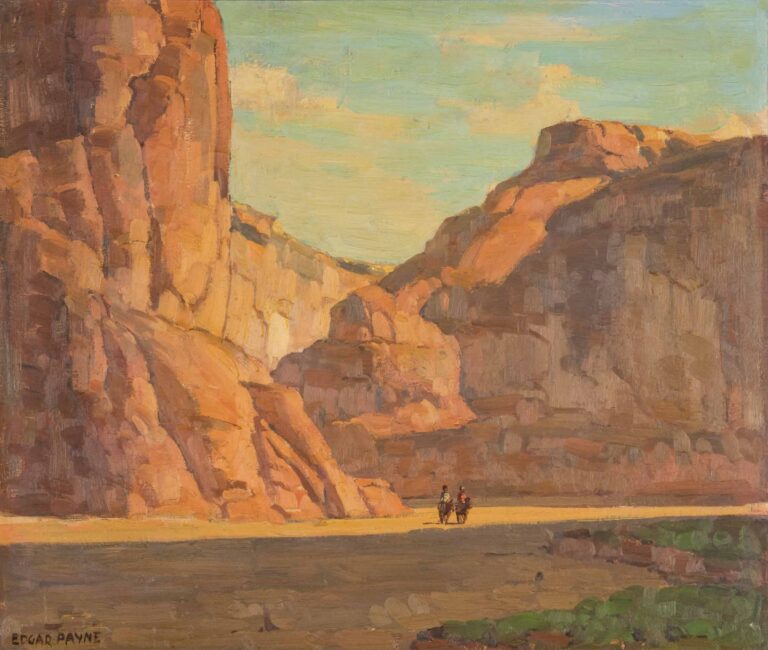Unlike most of his contemporaries in the Gallup New Deal Art collection, Edgar Alwin Payne was largely self-taught. He left home at the age of fourteen and worked as a sign painter, house painter, scenic painter, muralist, and portraitist in the South, Midwest, and Mexico. In 1907, he enrolled at the Art Institute of Chicago but left after only two weeks. In 1909, he made his first visit to California, where he met his future wife, Elsie Palmer, a fellow commercial artist. They married in 1912 and worked in California and Chicago, becoming well-established muralists and members of both art scenes. In Chicago, Payne exhibited at the Art Institute and the Palette & Chisel Club. He also helped organize, and became the first president of, the Laguna Beach Art Association in 1918.
Payne is best known for his Western landscapes, and, as a plein air (outdoor) painter, he spent his career making painting excursions to California, Arizona, Utah, New Mexico, and Canada. A trip to the Sierra Nevadas in 1916 made a lasting impression, and Payne returned to paint the majestic mountain range many times. Another pivotal moment in his career was a commission from the Santa Fe Railroad in 1917 to record the journey from Albuquerque to California. The Railroad frequently engaged artists to produce material for its advertising campaigns. For this commission, Payne spent four months exploring Canyon de Chelly, and the paintings he produced solidified his reputation as a landscape artist and his ties to the Southwest. According to Gallup Independent newspaper archives, Payne regularly summered in Gallup for the next three decades, making sightseeing trips in the surrounding area and often attending, and serving as a judge for, the Gallup Inter-Tribal Indian Ceremonial art exhibit.
Payne’s career reached a new level of success in the 1920s. During that decade, he twice made two-year tours of Europe, and he moved to New York City, where his artwork was selling well, while continuing to travel the Southwest. When the Great Depression took its toll, he resettled in Los Angeles in 1932, where he would spend the remainder of his life. In 1941, he published an influential book, Composition of Outdoor Painting.

